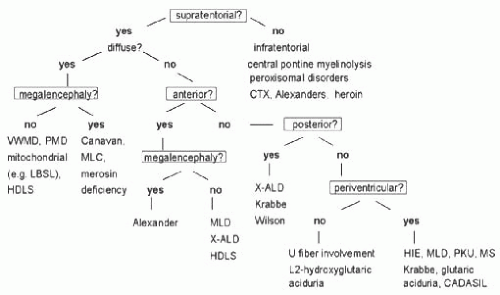Presentation: Cerebral
ALD (only seen in males): Onset 4 to 8 y, 85% present initially with neurologic symptoms. Often begins with personality changes (resembles
ADHD) and academic performance decline, followed by ataxia, spasticity, loss of vision and hearing. Dementia and seizures can occur later in the course. It often leads to total disability within 2 y. Adrenomyeloneuropathy (
AMN) or adult form (males and some females): Onset after 20 y with spastic paraplegia, sensory peripheral neuropathy, sphincter disturbances, and impotence.
Other si/sx: Adrenal insufficiency (mean onset 7.5 y, may be isolated).
Prognosis: In cerebral
ALD, there is progression to vegetative state and death by 3 y after onset (slower progression in adult cerebral
ALD).
FHx: X-linked, only males affected in cerebral form, up to 20% of female carriers will develop
AMN.









